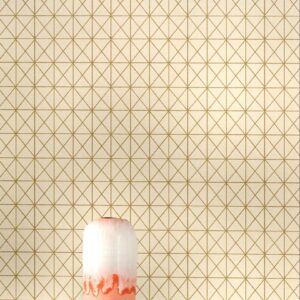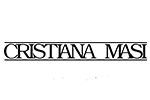Geometric
Arcadia A65104
-
Code:Arcadia A65104
Brand : Grandeco
Catalogue Name : Arcadia
Material Vinyl
Roll width 53 cm
Roll length 10,05 m
Pattern repeat type Dropped
Repeat distance 38,80 cm
Washable Scrubbable
m²
Arcadia
Discover the Arcadia collection, where natural splendor and timeless class come together harmoniously. This GrandecoLife collection embraces the diversity of nature and offers a range of stylish options. For a contemporary touch, geometric design is combined with the splendor of wood grains, while other wallpapers transform the room into a stunning oasis with metallic sheen and textural elements.
Category: Geometric
Tags: Bed Room, Dining Room, Living Room, meters
| Brands | GrandEco |
|---|---|
| Color | Black, Grey |
Based on 0 reviews
0.0 overall
0
0
0
0
0
Be the first to review “Arcadia A65104” Cancel reply
Related products
-
Geometric
OMB 302
Rated 2.46 out of 5(691)- Code: OMB 302
- Brand : Khroma
- Catalogue Name : Ombra
- Design Type: Non Woven
- Roll width (M): 0.53M *10.05M
- Roll Size (M): 57 Sqft
- Match: Straight Match
- Repeat: 32 cm / 12.6 inch
- Cleaning: Spongable
- Cost per sq.feet :Rs 214
form_structure_1=[[{"form_identifier":"","name":"fieldname2","shortlabel":"","index":0,"ftype":"fnumber","userhelp":"","userhelpTooltip":false,"tooltipIcon":false,"csslayout":"","title":"Height of the wall (Feet)","predefined":"","predefinedClick":false,"required":false,"exclude":false,"readonly":false,"size":"medium","thousandSeparator":"","decimalSymbol":".","min":"","max":"","formatDynamically":false,"dformat":"digits","formats":["digits","number","percent"],"fBuild":{},"parent":""},{"form_identifier":"","name":"fieldname3","shortlabel":"","index":1,"ftype":"fnumber","userhelp":"","userhelpTooltip":false,"tooltipIcon":false,"csslayout":"","title":"Width of the wall (Feet)","predefined":"","predefinedClick":false,"required":false,"exclude":false,"readonly":false,"size":"medium","thousandSeparator":"","decimalSymbol":".","min":"","max":"","formatDynamically":false,"dformat":"digits","formats":["digits","number","percent"],"fBuild":{},"parent":""},{"form_identifier":"","name":"separator1","shortlabel":"","index":2,"ftype":"fSectionBreak","userhelp":"","userhelpTooltip":false,"tooltipIcon":false,"csslayout":"","title":"","fBuild":{},"parent":""},{"dependencies":[{"rule":"","complex":false,"fields":[""]}],"form_identifier":"","name":"fieldname1","shortlabel":"","index":3,"ftype":"fCalculated","userhelp":"","userhelpTooltip":false,"tooltipIcon":false,"csslayout":"","title":"Rolls Required","predefined":"","required":false,"exclude":false,"size":"medium","eq":"CEIL((fieldname2*fieldname3)\/57)","suffix":"","prefix":"","decimalsymbol":".","groupingsymbol":"","readonly":true,"noEvalIfManual":true,"formatDynamically":false,"hidefield":false,"fBuild":{},"parent":""}],{"0":{"title":"Rolls Calculation","description":"ENTER YOUR WALL'S SPECIFICATIONS","formlayout":"top_aligned","formtemplate":"","evalequations":1,"evalequationsevent":2,"autocomplete":1,"persistence":0,"customstyles":""},"formid":"cp_calculatedfieldsf_pform_1"}];SKU: n/a₹12,200.00 -
Geometric
ZERO 9716
Rated 2.49 out of 5(1589)- Code: ZERO 9716
- Brand : Cristiana Masi
- Catalogue Name : Zero
- Design Type: Vinyl Wallpaper on a Non Woven Basis
- Roll width (M): 0.53M *10.05M
- Roll Size (M): 57 Sqft
- Match: straight 10.06 cm
- Cleaning: Spongable
- Cost per sq.feet :Rs 114
form_structure_2=[[{"form_identifier":"","name":"fieldname2","shortlabel":"","index":0,"ftype":"fnumber","userhelp":"","userhelpTooltip":false,"tooltipIcon":false,"csslayout":"","title":"Height of the wall (Feet)","predefined":"","predefinedClick":false,"required":false,"exclude":false,"readonly":false,"size":"medium","thousandSeparator":"","decimalSymbol":".","min":"","max":"","formatDynamically":false,"dformat":"digits","formats":["digits","number","percent"],"fBuild":{},"parent":""},{"form_identifier":"","name":"fieldname3","shortlabel":"","index":1,"ftype":"fnumber","userhelp":"","userhelpTooltip":false,"tooltipIcon":false,"csslayout":"","title":"Width of the wall (Feet)","predefined":"","predefinedClick":false,"required":false,"exclude":false,"readonly":false,"size":"medium","thousandSeparator":"","decimalSymbol":".","min":"","max":"","formatDynamically":false,"dformat":"digits","formats":["digits","number","percent"],"fBuild":{},"parent":""},{"form_identifier":"","name":"separator1","shortlabel":"","index":2,"ftype":"fSectionBreak","userhelp":"","userhelpTooltip":false,"tooltipIcon":false,"csslayout":"","title":"","fBuild":{},"parent":""},{"dependencies":[{"rule":"","complex":false,"fields":[""]}],"form_identifier":"","name":"fieldname1","shortlabel":"","index":3,"ftype":"fCalculated","userhelp":"","userhelpTooltip":false,"tooltipIcon":false,"csslayout":"","title":"Rolls Required","predefined":"","required":false,"exclude":false,"size":"medium","eq":"CEIL((fieldname2*fieldname3)\/57)","suffix":"","prefix":"","decimalsymbol":".","groupingsymbol":"","readonly":true,"noEvalIfManual":true,"formatDynamically":false,"hidefield":false,"fBuild":{},"parent":""}],{"0":{"title":"Rolls Calculation","description":"ENTER YOUR WALL'S SPECIFICATIONS","formlayout":"top_aligned","formtemplate":"","evalequations":1,"evalequationsevent":2,"autocomplete":1,"persistence":0,"customstyles":""},"formid":"cp_calculatedfieldsf_pform_2"}];SKU: n/a₹6,500.00 -
Geometric
ZERO 9723
Rated 2.55 out of 5(3021)- Code: ZERO 9723
- Brand : Cristiana Masi
- Catalogue Name : Zero
- Design Type: Vinyl Wallpaper on a Non Woven Basis
- Roll width (M): 0.53M *10.05M
- Roll Size (M): 57 Sqft
- Match: straight 17.7 cm
- Cleaning: Spongable
- Cost per sq.feet :Rs 114
form_structure_3=[[{"form_identifier":"","name":"fieldname2","shortlabel":"","index":0,"ftype":"fnumber","userhelp":"","userhelpTooltip":false,"tooltipIcon":false,"csslayout":"","title":"Height of the wall (Feet)","predefined":"","predefinedClick":false,"required":false,"exclude":false,"readonly":false,"size":"medium","thousandSeparator":"","decimalSymbol":".","min":"","max":"","formatDynamically":false,"dformat":"digits","formats":["digits","number","percent"],"fBuild":{},"parent":""},{"form_identifier":"","name":"fieldname3","shortlabel":"","index":1,"ftype":"fnumber","userhelp":"","userhelpTooltip":false,"tooltipIcon":false,"csslayout":"","title":"Width of the wall (Feet)","predefined":"","predefinedClick":false,"required":false,"exclude":false,"readonly":false,"size":"medium","thousandSeparator":"","decimalSymbol":".","min":"","max":"","formatDynamically":false,"dformat":"digits","formats":["digits","number","percent"],"fBuild":{},"parent":""},{"form_identifier":"","name":"separator1","shortlabel":"","index":2,"ftype":"fSectionBreak","userhelp":"","userhelpTooltip":false,"tooltipIcon":false,"csslayout":"","title":"","fBuild":{},"parent":""},{"dependencies":[{"rule":"","complex":false,"fields":[""]}],"form_identifier":"","name":"fieldname1","shortlabel":"","index":3,"ftype":"fCalculated","userhelp":"","userhelpTooltip":false,"tooltipIcon":false,"csslayout":"","title":"Rolls Required","predefined":"","required":false,"exclude":false,"size":"medium","eq":"CEIL((fieldname2*fieldname3)\/57)","suffix":"","prefix":"","decimalsymbol":".","groupingsymbol":"","readonly":true,"noEvalIfManual":true,"formatDynamically":false,"hidefield":false,"fBuild":{},"parent":""}],{"0":{"title":"Rolls Calculation","description":"ENTER YOUR WALL'S SPECIFICATIONS","formlayout":"top_aligned","formtemplate":"","evalequations":1,"evalequationsevent":2,"autocomplete":1,"persistence":0,"customstyles":""},"formid":"cp_calculatedfieldsf_pform_3"}];SKU: n/a₹6,500.00 -
Geometric
ZERO 9712
Rated 2.48 out of 5(9126)- Code: ZERO 9712
- Brand : Cristiaa Masi
- Catalogue Name : Zero
- Design Type: Vinyl Wallpaper on a Non Woven Basis
- Roll width (M): 0.53M *10.05M
- Roll Size (M): 57 Sqft
- Match: straight of 64 cm
- Cleaning: Spongable
- Cost per sq.feet :Rs 114
form_structure_4=[[{"form_identifier":"","name":"fieldname2","shortlabel":"","index":0,"ftype":"fnumber","userhelp":"","userhelpTooltip":false,"tooltipIcon":false,"csslayout":"","title":"Height of the wall (Feet)","predefined":"","predefinedClick":false,"required":false,"exclude":false,"readonly":false,"size":"medium","thousandSeparator":"","decimalSymbol":".","min":"","max":"","formatDynamically":false,"dformat":"digits","formats":["digits","number","percent"],"fBuild":{},"parent":""},{"form_identifier":"","name":"fieldname3","shortlabel":"","index":1,"ftype":"fnumber","userhelp":"","userhelpTooltip":false,"tooltipIcon":false,"csslayout":"","title":"Width of the wall (Feet)","predefined":"","predefinedClick":false,"required":false,"exclude":false,"readonly":false,"size":"medium","thousandSeparator":"","decimalSymbol":".","min":"","max":"","formatDynamically":false,"dformat":"digits","formats":["digits","number","percent"],"fBuild":{},"parent":""},{"form_identifier":"","name":"separator1","shortlabel":"","index":2,"ftype":"fSectionBreak","userhelp":"","userhelpTooltip":false,"tooltipIcon":false,"csslayout":"","title":"","fBuild":{},"parent":""},{"dependencies":[{"rule":"","complex":false,"fields":[""]}],"form_identifier":"","name":"fieldname1","shortlabel":"","index":3,"ftype":"fCalculated","userhelp":"","userhelpTooltip":false,"tooltipIcon":false,"csslayout":"","title":"Rolls Required","predefined":"","required":false,"exclude":false,"size":"medium","eq":"CEIL((fieldname2*fieldname3)\/57)","suffix":"","prefix":"","decimalsymbol":".","groupingsymbol":"","readonly":true,"noEvalIfManual":true,"formatDynamically":false,"hidefield":false,"fBuild":{},"parent":""}],{"0":{"title":"Rolls Calculation","description":"ENTER YOUR WALL'S SPECIFICATIONS","formlayout":"top_aligned","formtemplate":"","evalequations":1,"evalequationsevent":2,"autocomplete":1,"persistence":0,"customstyles":""},"formid":"cp_calculatedfieldsf_pform_4"}];SKU: n/a₹6,500.00 -
Geometric
AID 007
Rated 2.47 out of 5(1870)- Code: AID 007
- Brand : Khroma
- Catalogue Name : Aida
- Design Type: Non Woven
- Roll Size (M): 57 Sqft
- Cost per sq.feet : 235
- Match: Offset Match
- Cleaning: Spongable
- Repeat: 64 cm / 25.2 inch
- Weight: 150 g/m
form_structure_5=[[{"form_identifier":"","name":"fieldname2","shortlabel":"","index":0,"ftype":"fnumber","userhelp":"","userhelpTooltip":false,"tooltipIcon":false,"csslayout":"","title":"Height of the wall (Feet)","predefined":"","predefinedClick":false,"required":false,"exclude":false,"readonly":false,"size":"medium","thousandSeparator":"","decimalSymbol":".","min":"","max":"","formatDynamically":false,"dformat":"digits","formats":["digits","number","percent"],"fBuild":{},"parent":""},{"form_identifier":"","name":"fieldname3","shortlabel":"","index":1,"ftype":"fnumber","userhelp":"","userhelpTooltip":false,"tooltipIcon":false,"csslayout":"","title":"Width of the wall (Feet)","predefined":"","predefinedClick":false,"required":false,"exclude":false,"readonly":false,"size":"medium","thousandSeparator":"","decimalSymbol":".","min":"","max":"","formatDynamically":false,"dformat":"digits","formats":["digits","number","percent"],"fBuild":{},"parent":""},{"form_identifier":"","name":"separator1","shortlabel":"","index":2,"ftype":"fSectionBreak","userhelp":"","userhelpTooltip":false,"tooltipIcon":false,"csslayout":"","title":"","fBuild":{},"parent":""},{"dependencies":[{"rule":"","complex":false,"fields":[""]}],"form_identifier":"","name":"fieldname1","shortlabel":"","index":3,"ftype":"fCalculated","userhelp":"","userhelpTooltip":false,"tooltipIcon":false,"csslayout":"","title":"Rolls Required","predefined":"","required":false,"exclude":false,"size":"medium","eq":"CEIL((fieldname2*fieldname3)\/57)","suffix":"","prefix":"","decimalsymbol":".","groupingsymbol":"","readonly":true,"noEvalIfManual":true,"formatDynamically":false,"hidefield":false,"fBuild":{},"parent":""}],{"0":{"title":"Rolls Calculation","description":"ENTER YOUR WALL'S SPECIFICATIONS","formlayout":"top_aligned","formtemplate":"","evalequations":1,"evalequationsevent":2,"autocomplete":1,"persistence":0,"customstyles":""},"formid":"cp_calculatedfieldsf_pform_5"}];SKU: n/a₹13,400.00















There are no reviews yet.